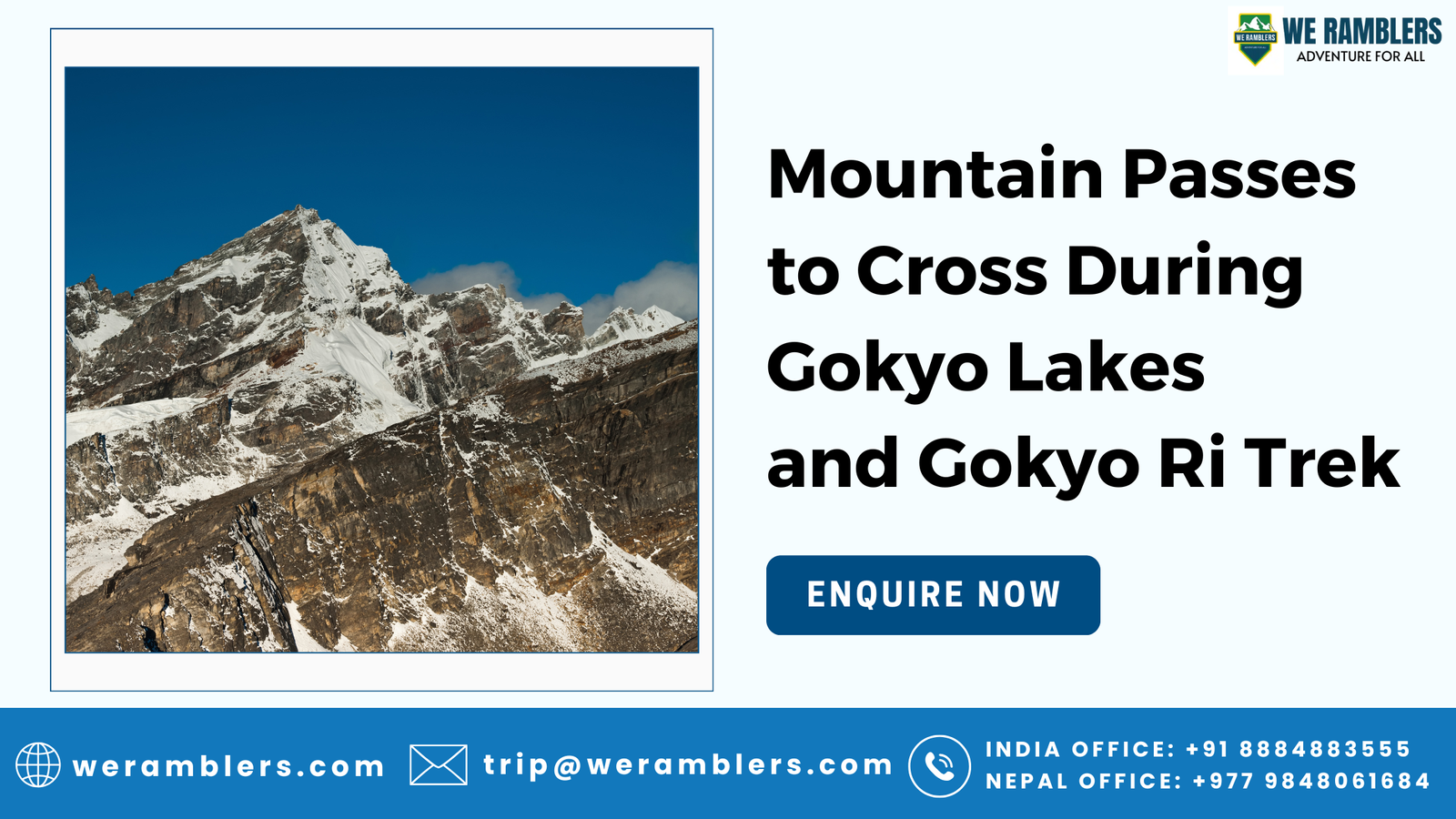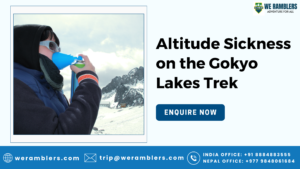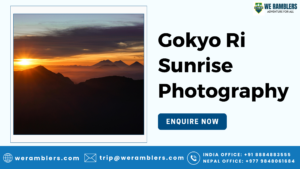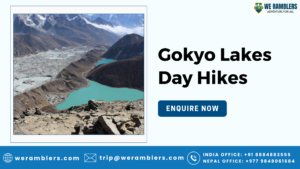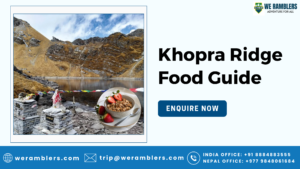Mountain Passes on Gokyo Lakes and Gokyo Ri Trek
The Gokyo Lakes and Gokyo Ri Trek is one of the most breathtaking adventures in the Everest region, offering pristine turquoise lakes, dramatic glaciers, and panoramic Himalayan vistas. Along the way, trekkers will encounter some of the most iconic mountain passes to cross during Gokyo Lakes and Gokyo Ri Trek, each adding both challenge and reward to the journey. These high-altitude routes connect valleys, reveal sweeping views, and immerse travelers in the wild beauty of Sagarmatha National Park.
Overview of Gokyo Lakes and Gokyo Ri Trek
The Gokyo Lakes and Gokyo Ri Trek unfolds in the Khumbu region of Nepal, inside the UNESCO World Heritage Site of Sagarmatha National Park. The route takes adventurers through Sherpa villages, lush valleys, alpine meadows, and eventually to the six spectacular Gokyo Lakes, including the famous Dudh Pokhari.
A major highlight is the climb to Gokyo Ri (5,357 m), a vantage point that offers unobstructed views of Mount Everest, Lhotse, Makalu, and Cho Oyu, as well as the sprawling Ngozumpa Glacier, the largest glacier in Nepal. The trek typically takes 15–17 days, depending on pace and acclimatization schedules.
Trekking in Nepal requires you to be accompanied by a certified trekking guide, ensuring both safety and compliance with national regulations. Spring (March–May) and autumn (September–November) are the best seasons for this trek, as the weather is stable, skies are clear, and visibility is excellent for mountain viewing.
Why Mountain Passes Are Important in Gokyo Lakes and Gokyo Ri Trek
High mountain passes on the Gokyo trekking route are more than just pathways between valleys; they are gateways to some of the most awe-inspiring vistas in the Himalayas. From the summits of these passes, trekkers can witness an unparalleled panorama of 8,000-meter peaks, vast glaciers, and alpine landscapes dotted with emerald lakes. Crossing these passes also adds to the adventure’s sense of achievement, testing both stamina and spirit. For many, the passes are the defining moments of the trek; moments where nature’s grandeur feels within arm’s reach.
Major Mountain Passes on Gokyo Lakes and Gokyo Ri Trek
Renjo La Pass (5,360 m)
One of the crown jewels of the Gokyo Lakes and Gokyo Ri Trek, Renjo La Pass connects the serene Gokyo Valley with the less-trodden Thame Valley. Reaching the top is a demanding climb, but the rewards are extraordinary.
From the pass, trekkers can enjoy sweeping views of Mount Everest, Lhotse, Makalu, and the towering Cho Oyu. Below, the shimmering Gokyo Lakes appear like jewels embedded in the rugged terrain, while the Ngozumpa Glacier stretches endlessly into the distance. The trail itself is a mix of rocky paths and icy sections, so sturdy boots and trekking poles are essential.
Because of its remote feel and fewer trekkers compared to other passes, Renjo La is perfect for those seeking both solitude and scenery. The descent into Thame offers a cultural immersion, with traditional Sherpa villages and ancient monasteries along the way.
Cho La Pass (5,420 m)
Although technically part of the Three Passes Trek, Cho La Pass is often included in extended itineraries combining the Gokyo Lakes with the Everest Base Camp Trek. This makes it a sought-after route for trekkers looking for a complete Everest region experience.
Cho La links the Gokyo Valley to the Khumbu Valley and involves traversing a glacier, negotiating steep rocky inclines, and navigating through snow and ice. At the top, the view is mesmerizing; mountains tower in every direction, with Ama Dablam stealing the show in the east.
Crossing Cho La demands good physical fitness, proper acclimatization, and reliable weather conditions. The pass is often covered in snow, even in the trekking seasons, making crampons and warm layers non-negotiable. While challenging, it’s one of the most memorable parts of the journey for those who take it on.
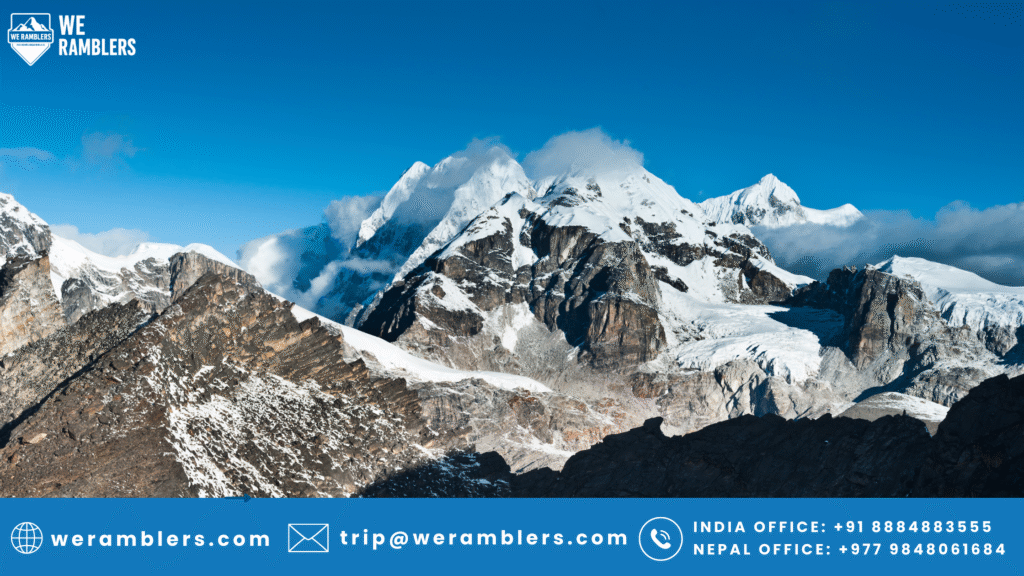
Optional Lower Passes & Scenic Trail Sections
In addition to the high passes, the Gokyo trekking route offers smaller ridges and viewpoints that add richness to the trek. For instance:
- Phortse Tenga Ridge: Offers sweeping views of the Dudh Koshi Valley and surrounding peaks.
- Machhermo and Dole High Points: Gentle climbs that reward trekkers with tranquil Himalayan landscapes.
- Cultural villages like Luza and Phortse, where trekkers can experience authentic Sherpa hospitality.
These lower passes may not have the grandeur of Renjo La or Cho La, but they provide welcome acclimatization breaks and photogenic scenery.
Gokyo Lakes and Gokyo Ri Trekking Challenges & Safety Tips
Crossing mountain passes during Gokyo Lakes and Gokyo Ri trek requires preparation, patience, and respect for the environment. The biggest challenges include:
- Altitude sickness: Ascend gradually, stay hydrated, and follow acclimatization schedules.
- Weather shifts: Conditions can change rapidly, so always carry extra warm layers and rain protection.
- Trail difficulty: Pass crossings often involve icy paths and loose rocks; use trekking poles for stability.
- Navigation & safety: Always travel with a certified trekking guide to ensure safe and legal passage.
With the right gear, mindset, and guidance, these challenges become part of the adventure’s reward.
We Ramblers — Your Travel Partner for Crossing Mountain Passes during Gokyo Lakes and Gokyo Ri Trek Safely
We Ramblers is a trusted adventure travel company, specializing in guided treks across the Himalayas. Our itineraries are designed for safety, sustainability, and unforgettable experiences, from the iconic Everest Base Camp Trek to hidden gems like Khopra Ridge and Mardi Himal.
With experienced, certified trekking guides, personalized itineraries, and a commitment to eco-friendly practices, our team ensures that every journey is as safe as it is spectacular.
Frequently Asked Questions (FAQs) About The Mountain Passes to Cross During Gokyo Lakes and Gokyo Ri Trek
Q1: Which is the highest pass in the Gokyo Lakes Trek?
The highest is Cho La Pass at about 5,420 m, especially if combined with the Everest Base Camp route.
Q2: How difficult is the Renjo La Pass crossing?
It’s challenging due to steep ascents and altitude but offers some of the most rewarding views in the Everest region.
Q3: Can you combine Gokyo Lakes Trek with Everest Base Camp?
Yes, many trekkers link the two routes via Cho La Pass for a longer, more varied Himalayan experience. Contact us now for the detailed itinerary.
Q4: What is the best month to trek to Gokyo Ri?
Spring (March–May) and autumn (September–November) offer the best weather, stable trails, and clear mountain views.
Q5: Is a guide mandatory for Gokyo Lakes and Gokyo Ri Trek?
Yes, trekking in Nepal requires you to be accompanied by a certified trekking guide for safety and regulation compliance.

